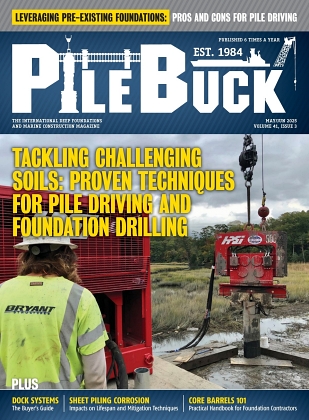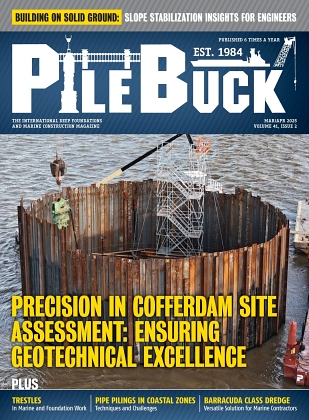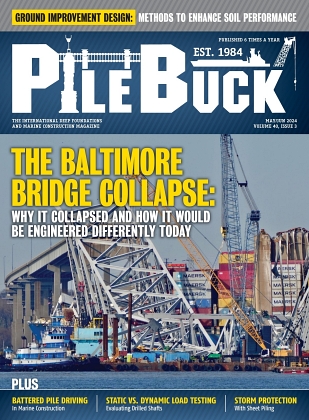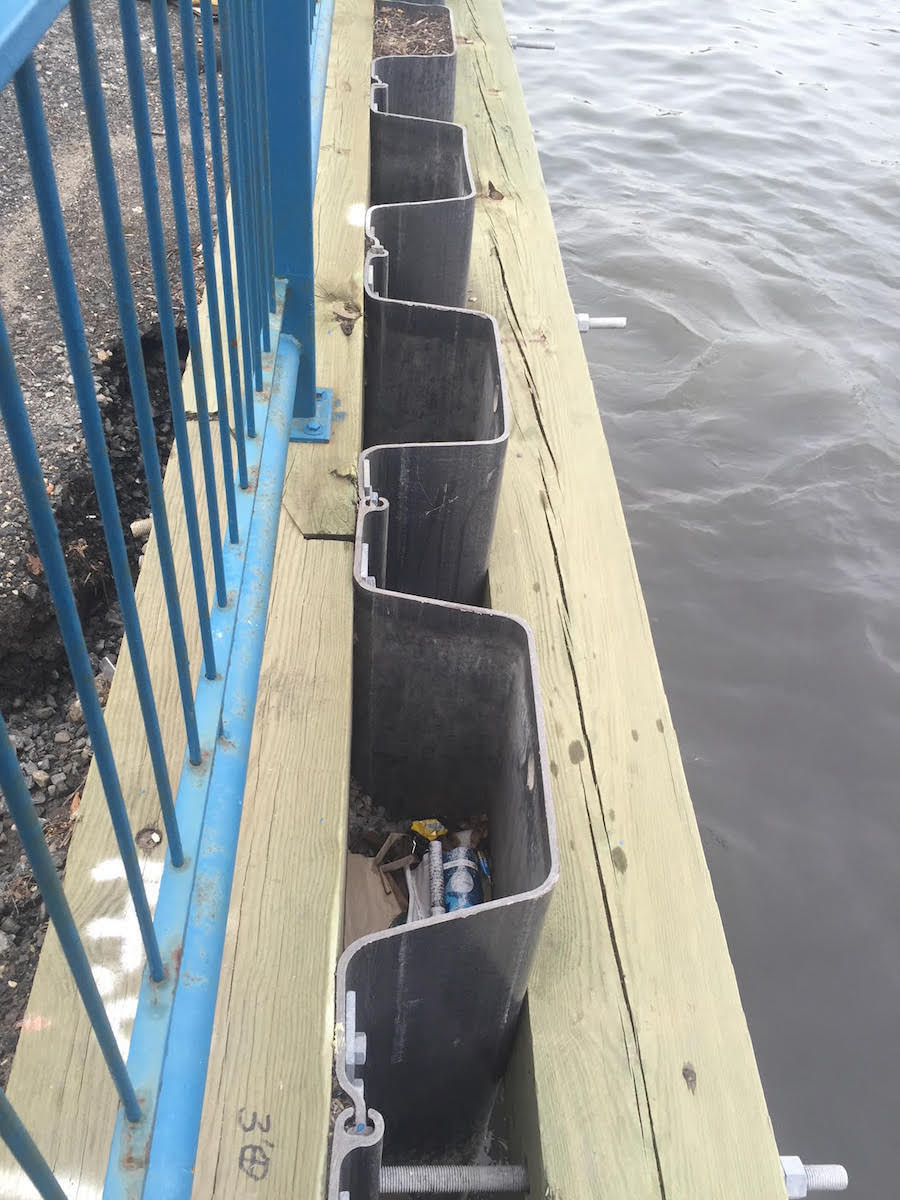Design Considerations for Sheet Pile Structures


View the complete article here.
Sheet piling is an essential construction technique involving driving interlocking sheets of material—typically steel, vinyl, or wood—into the ground to provide earth retention and excavation support. Integral to building foundations, underground structures, and seawalls—sheet piling forms a sturdy barrier to hold back soil or water, making it indispensable in both temporary and permanent works.
The effective use of sheet piling hinges on thoughtful design considerations that reconcile the demands of structural integrity with those of the surrounding environment. This involves selecting the right materials and shapes to meet the load requirements and adapt to the landscape, ensuring a balance between function and form.
This guide will discuss the architectural significance of sheet piles, their engineering role in load distribution, material choices, and the challenges encountered during construction.
Architectural Considerations
When incorporating sheet pile structures into construction projects, the architectural considerations are pivotal—especially concerning aesthetics and visibility, as well as the adaptability and flexibility of the designs.
Aesthetics and Visibility
The visual impact of sheet pile structures can be significant and thus requires thoughtful integration into their surroundings. Architects and designers must consider the material and finish of sheet piles to complement the landscape. For urban environments, sheet piles can be painted or covered with a façade that matches the city’s aesthetic. In more natural settings, they may be designed to blend seamlessly with the environment—often using textures or colors that mimic natural elements. Examples include:
- A coastal protection project in the Netherlands employed steel sheet piles with a surface treatment that patinated over time—offering a natural, rusted appearance that blended with the seaside environment.
- For a riverbank stabilization project in a historic city center, vinyl sheet piles with a stone-pattern finish were used to maintain the look of the traditional stone walls while providing the necessary structural support.
Adaptability and Flexibility
Sheet pile designs must be adaptable to a variety of site conditions—including soil type, water presence, and environmental restrictions. The interlocking system of sheet piles allows for various configurations, accommodating curves and corners to fit the site’s contours. Moreover, the selection of the appropriate type of sheet pile (steel, vinyl, or wood) and its driving method can be tailored to meet the project’s specific requirements. Examples include:
- In a redevelopment area, a combination of vinyl and steel sheet piles was used to create a multi-use waterfront space—demonstrating flexibility in materials to achieve different technical and visual outcomes.
- An urban park project utilized wood sheet piles not only as a retaining structure but also as a key design element, providing a natural texture and creating an integrated seating solution for visitors.

Engineering Considerations
The engineering considerations for sheet pile structures are centered on their capacity to maintain structural integrity and load distribution, their interaction with soil and the environment, and the dynamics of water pressure and flow.
Structural Integrity and Load Distribution
Sheet piles work by providing resistance against the lateral pressures of soil. This is achieved through their unique shape and the ability to form a wall that distributes load across its length and depth. The interlocking edges create a continuous barrier that offers both tensile and in-plane stiffness, enabling the wall to act as a unit under lateral earth pressures.
Choosing the right type of sheet pile depends on several factors:
- The nature and magnitude of the loads they must support—including earth pressure, water pressure, and any superimposed loads.
- The conditions of the site, such as the depth of excavation or required wall height.
- The duration of use, distinguishing between permanent and temporary structures.
- Economic considerations, balancing cost with performance requirements.
Soil and Environmental Interactions
Soil type is a key factor in sheet pile design, influencing the method of installation and the performance of the wall. Cohesive soils, for example, may exert different pressures compared to granular soils. Engineers must perform soil investigations to determine the properties that will impact the sheet pile’s behavior.
Environmental considerations should also be considered:
- Choosing installation methods that minimize vibration and noise can reduce the impact on surrounding wildlife and habitats.
- Employing sustainable materials or methods that allow for the recycling or reuse of sheet piles contributes to a project’s overall environmental responsibility.
Water Dynamics
In waterfront and underwater construction, sheet piles must withstand the dynamic forces of water:
- Engineers must consider hydrostatic pressures and the potential for water flow beneath or around the sheet piles.
- In tidal areas, the design must accommodate fluctuating water levels and potential scouring effects.
- For cofferdams and similar structures, the seal at the interlocks is critical to prevent water ingress.
Material Selection
Choosing the right material for sheet piling is a critical decision that affects not only the structural integrity and longevity of the project but also its environmental impact. Steel, vinyl, and wood are the most common materials used for sheet piles, each with unique properties that make them suitable for different circumstances.
Comparison of Materials
Steel is highly favored for its exceptional strength and durability. It’s typically used in projects where a high load-bearing capacity is required. Steel sheet piles are also very resilient against hard driving conditions and can be reused, providing an economical solution for temporary structures. However, the production and corrosion of steel have environmental considerations that must be managed—such as using protective coatings or choosing steel with a high percentage of recycled content.
Vinyl sheet piles, typically made of PVC, offer an excellent alternative to steel in situations where lower structural loads are expected. They tend to be resistant to chemical and biological corrosion, making them suitable for marine environments. From an environmental perspective, vinyl sheet piles have a lower carbon footprint in production than steel.
Wood sheet piles are less common but offer a sustainable choice, particularly in temporary or low-stress applications. The environmental impact of wood piles can be favorable if sourced from sustainably managed forests. They are also biodegradable, but their susceptibility to rot and insects limits their durability compared to steel or vinyl.
Factors Influencing Choice of Material
Several factors should be considered when selecting the material for sheet piles…
Structural Requirements
- The nature of the load (e.g., earth, water, dynamic forces) and the load-bearing capacity required can eliminate certain materials.
- The longevity of the project—permanent structures often require more durable materials like steel, while temporary or low-load structures can utilize wood or vinyl.
Environmental Considerations
- Corrosive environments such as saltwater can dictate the need for corrosion-resistant materials like vinyl or specially coated steel.
- Environmental regulations and sustainability goals can lead to the selection of materials with a lower environmental impact over their lifecycle.
Economic Factors
- The initial cost of materials is a consideration, with wood typically being the least expensive—followed by vinyl and then steel.
- Lifecycle costs—including maintenance, durability, and potential for reuse—can make more expensive materials more economical over time.
Installation Considerations
- The method of installation can be influenced by material choice. For example, certain soils may require the strength of steel to drive the piles without damage.
- Noise and vibration restrictions in sensitive areas might limit the use of materials that require heavy driving equipment.
Aesthetic Impact
- For projects where the sheet piles are visible, the material’s appearance becomes an important factor. Vinyl and wood can offer more visually appealing options compared to steel.
 Challenges and Solutions
Challenges and Solutions
Sheet piling projects often face a set of common design challenges, which require innovative solutions to overcome. These challenges can be aesthetic, structural, or environmental in nature.
Common Design Challenges and Innovative Solutions
Aesthetic challenges: Sheet piles, particularly in urban or visible areas, can be unsightly. Responding, architects are now applying high-definition finishes to vinyl or steel sheet piles to mimic the look of natural materials like stone or wood. In addition, integrating green spaces or public art can enhance the visual appeal of the structures.
Structural challenges: One significant challenge is ensuring that the sheet piles can withstand the pressures exerted by soil and water. Recent innovations include the use of modular sheet piles, which can be quickly assembled and adjusted on-site for added strength. In addition, engineers are employing advanced simulation software to predict and plan for the loads and stresses these structures will face.
Environmental challenges: The installation of sheet piles can disrupt local ecosystems. To address this—silent piling techniques, which significantly reduce noise and vibration during installation, are being adopted. Also—eco-friendly materials, such as recycled plastic or sustainably sourced timber, are being utilized to minimize the environmental footprint.
Overcoming Aesthetic, Structural, and Environmental Challenges
Aesthetic improvements:
- Use of textured coatings that both protect and beautify the piles.
- Implementation of landscaped embankments or terracing that obscures the piles and provides community spaces.
Structural advancements:
- Incorporation of flexible design principles that allow sheet piles to adjust to unexpected soil conditions.
- Utilization of hybrid systems combining the high load-bearing capacity of steel with the corrosion resistance of vinyl.
Environmental mitigations:
- Preference for non-disruptive installation methods like press-in techniques over traditional driving methods.
- Planning for biodiversity enhancement around the sheet pile installations to promote local flora and fauna.
Addressing these challenges requires a collaborative effort between engineers, architects, and environmental scientists. By combining innovative materials and techniques with a strong emphasis on pre-construction planning, sheet piling can be implemented effectively—meeting the highest standards of form, function, and environmental stewardship.
View the complete article here.
What are the key factors in choosing materials for sheet piles?
Material selection for sheet piles depends on load requirements, environmental conditions, and economic considerations. Steel offers high strength, vinyl provides corrosion resistance, and wood is cost-effective but less durable.
What are the main engineering challenges in designing sheet pile structures?
Key challenges include ensuring structural integrity against soil and water pressures, addressing environmental impacts during installation, and choosing appropriate materials for long-term durability and performance.














 Challenges and Solutions
Challenges and Solutions


